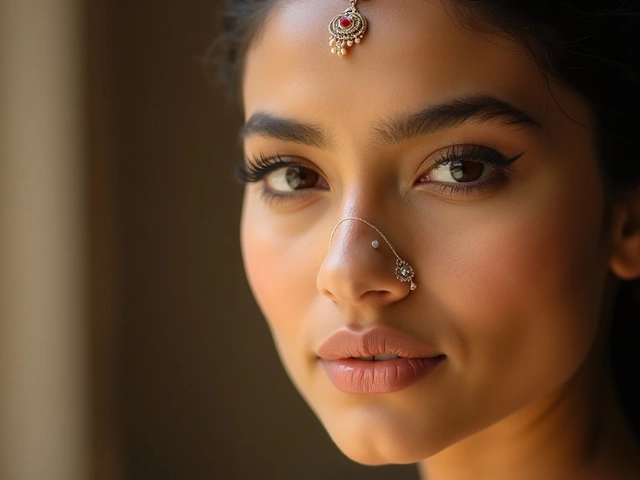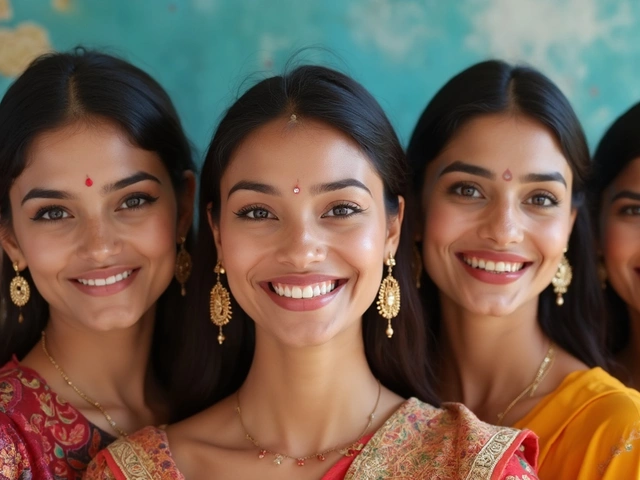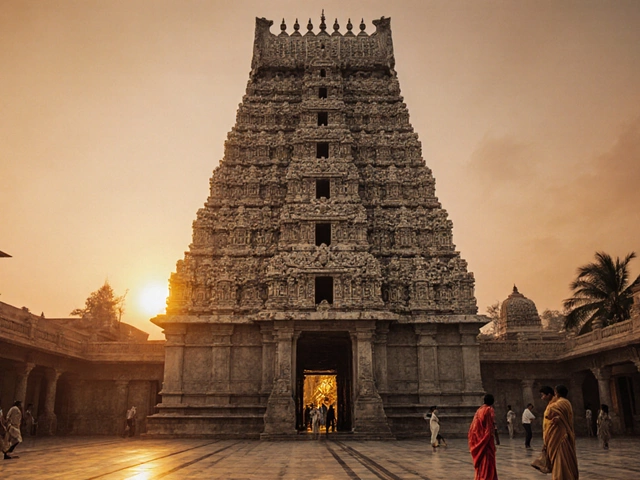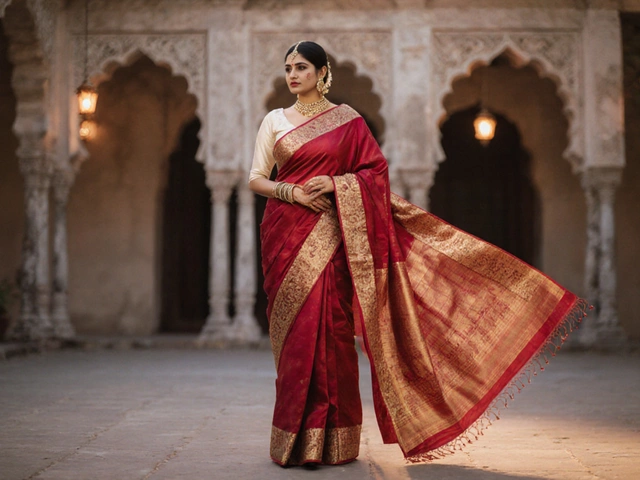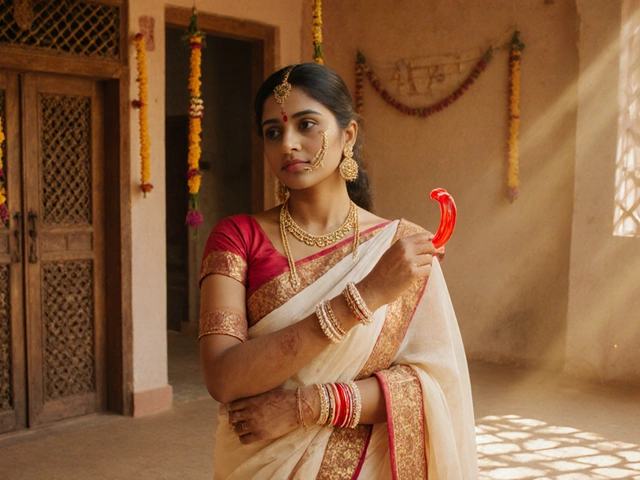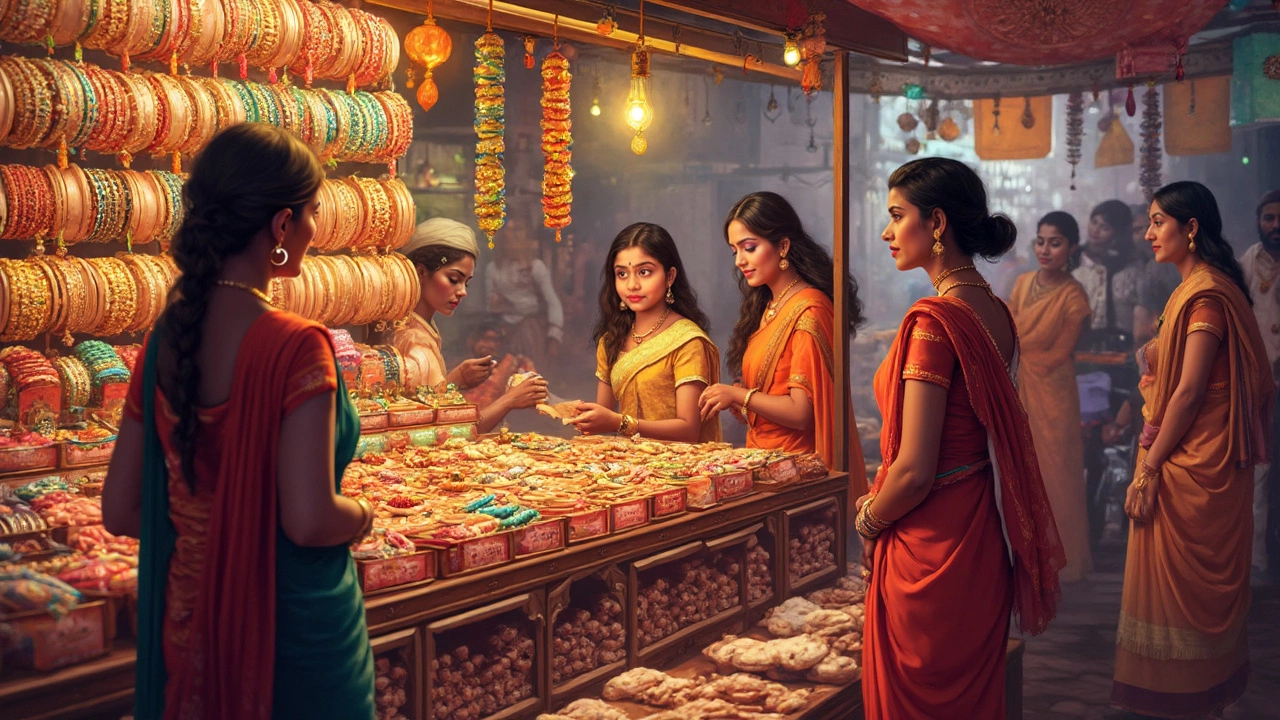
Ever heard someone mention "bangles" and wondered what they're really called in India? You're not alone. While 'bangles' is the word used in English, in India, these circular bracelets have a bunch of names—like 'chudi' in Hindi, 'valayal' in Tamil, and 'kada' for the chunkier styles worn by both men and women. Glass bangles go by 'choori' in some regions, and you’ll hear 'bala', 'kangans', or even specific names based on design and metal. Each name carries its own vibe and local flavor.
Knowing what to call these bangles isn’t just a language thing—it helps you better understand the role they play in Indian life, shopping, and even celebrations. When you’re at a market stall in Jaipur or Mumbai, using the right terms can help you get what you’re really looking for, and maybe even score a better deal. Plus, it’s a great conversation starter with local sellers or friends curious about Indian culture.
- What Are Indian Bangles Actually Called?
- Meaning and Traditions Behind Bangles
- Different Types of Bangles by Region and Material
- How to Choose and Buy the Right Bangles
- Caring for Your Bangles: Simple Tips
What Are Indian Bangles Actually Called?
This is where things get interesting. In India, what you call a bangle really depends on where you are and what type you’re looking at. The most common Hindi word is chudi (plural: chudiyan). Ask for 'chudi' in Delhi, Lucknow, or most North Indian cities, and folks will know you mean those slim, colorful bangles women stack up by the dozen. Move down south to places like Chennai, and the word changes to 'valayal' in Tamil or 'valayam' in Malayalam. Head west and you’ll hear 'chudiyo' in Gujarati markets.
Now, there’s 'kada'—not to be confused with the slim chudi. A kada is usually thicker, sometimes metal or even ivory. You’ll see Sikh men wearing a steel kada as a faith symbol, but these are also part of daily wear in Punjab and Rajasthan for both men and women. Then there’s 'kangans'—these are usually chunkier bangles crafted from gold or silver, often given at weddings or festive occasions.
Let’s not forget glass bangles, especially in Hyderabad, which are called 'choorie' (plural: chooriyan). These are famous for the way they jingle and catch the light in markets like Laad Bazaar. Maharashtra has 'patlya', a name for lightweight gold bangles worn in pairs.
If you’re shopping or talking about Indian bangles with locals, it helps to know these words:
- Chudi/Chudiyaan: Generic, slim bangles, usually glass or metal.
- Kada: Single, thick bangle; can be plain or decorated.
- Kangan: Ornate, broader bangle, often made from precious metals.
- Valayal/Valayam: The Tamil/Malayalam word for bangles.
- Patlya: Pair of plain gold bangles in Maharashtra.
- Chooriyan: Glass bangles in the Deccan and North India.
Using the right term can make a difference, especially when you’re at a local store or asking someone about the deeper meaning behind what they’re wearing. Plus, it helps you look like you know your stuff—always a plus when you want the real deal.
Meaning and Traditions Behind Bangles
Bangles aren't just pretty arm candy—they carry deep meaning in daily life and celebrations. In most parts of India, women slip on bangles as a symbol of marriage, luck, and good health. Newlyweds in many Hindu communities even have a special bangle ceremony called 'Chooda' in Punjab, where the bride wears white and red bangles stacked high to kick off her married life. South Indian houses often jingle with the sound of Indian bangles during festivals like Diwali and Pongal.
Different colors and materials tell their own story. Red bangles stand for energy and luck. Green ones? New beginnings and fertility. Gold signifies wealth; glass is all about tradition. In some communities, glass bangles are worn so that, if one breaks, it's seen as a sign of warding off bad luck, not a mishap.
Not just women—men wear bangles too, called ‘kada’, especially among Sikhs. This metal bangle stands for strength and faith. For girls, first bangles are a big deal, often gifted during childhood rituals. Even babies wear black bangles in parts of India to keep away the evil eye.
Here’s a quick look at when and why bangles matter most:
- Weddings: Brides often wear dozens, as a wish for prosperity and a happy marriage.
- Festivals: Whole families gear up with new bangles to celebrate together.
- Daily wear: Married women, especially in rural India, wear bangles almost every day as a sign of marital status.
- Religious rituals: Bangles are offered at temples or used in prayer ceremonies.
| Occasion | Popular Bangle Type | Symbolism |
|---|---|---|
| Wedding | Glass, Gold, Chooda | Prosperity, happiness, marital status |
| Festivals | Colorful Lac, Metal | Celebration, tradition |
| Punjabi Rituals | Chooda (red & white) | New beginnings, protection |
| Sikh Faith | Kada (steel) | Strength, unity |
You can walk into a bangle shop and see how serious this is—vendors will even tell you which bangle is for which life stage or event. Next time you're picking out bangles, remember: you’re not just adding to a look. You’re stepping into a tradition that goes way beyond the wrist.
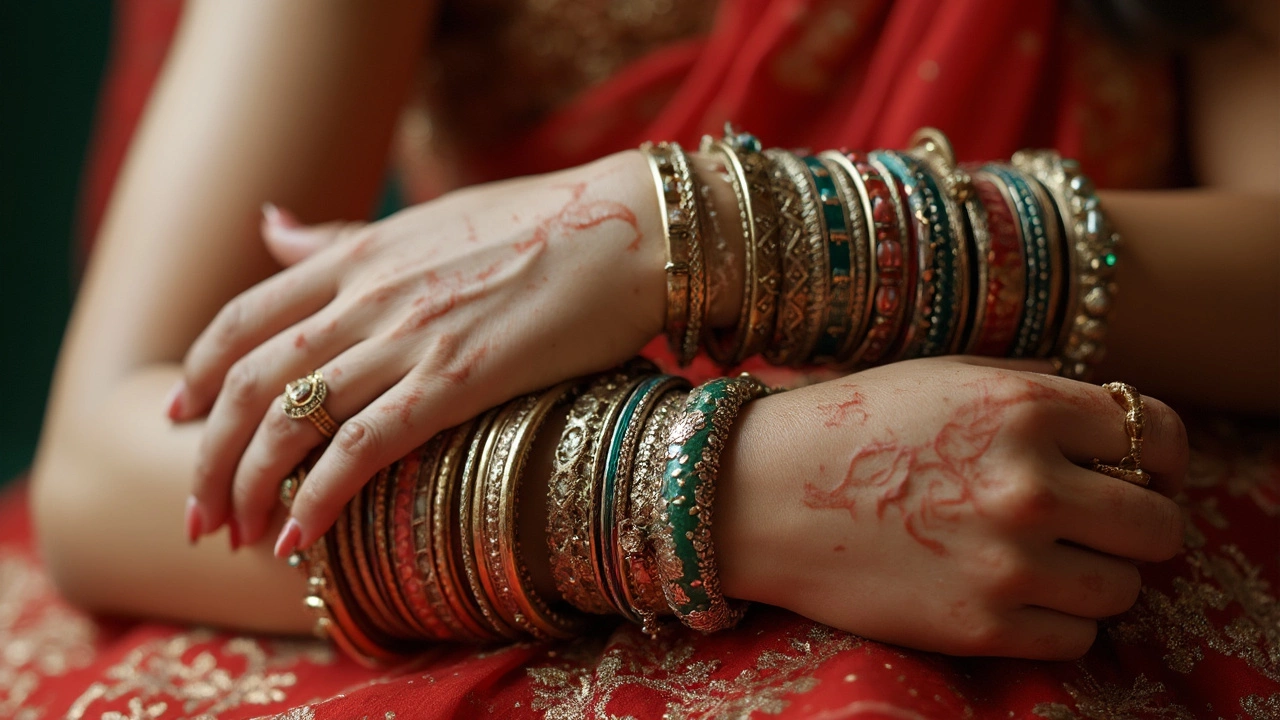
Different Types of Bangles by Region and Material
India isn’t shy when it comes to bangles. Regions across the country have their own signature styles, colors, and what they’re made from. These aren’t just random choices; each type ties into local identity, history, and even religious traditions. Here’s a quick tour of some of the most popular types you’ll find as you travel, shop online, or scroll through social feeds.
Indian bangles can be made out of just about anything—glass, gold, silver, lac (a type of natural resin), plastic, even ivory (though that’s now banned for wildlife protection). In Hyderabad, glass bangles from Laad Bazaar are famous for the "click-clack" sound they make and their shiny colors. Head to Punjab and you’ll find solid, chunky metal "kadas," often spotted in Sikh families. Down south, in Tamil Nadu, gold "valayal" are a must-have for weddings. Meanwhile, lac bangles from Rajasthan are known for their bright hues and the way they’re hand-shaped with simple tools.
Here’s a simple breakdown of the main types and where you’ll usually find them:
- Glass Bangles (Chudi/Choori): Super popular in Maharashtra, Hyderabad, and West Bengal. Known for their brittle beauty and rainbow of colors. Worn in stacks, especially during weddings or festivals.
- Metal Bangles (Kangan/Kada): Punjab, Rajasthan, and parts of North India love these. Sikhs wear a steel "kara" all the time. Gold ones are status symbols at weddings.
- Lac Bangles: Standout tradition in Rajasthan. Artisans spin the lac by hand and add decorations with tiny mirrors and stones.
- Plastic Bangles: These are the budget-friendly option all over India. Kids go crazy for them because they're light and safe.
- Ivory and Bone: Outlawed now, but older heirloom sets survive, especially among Bengali brides, who used to wear white shankha (conch shell) and red coral bangles.
Check out how types and materials match up by region:
| Region | Common Material | Local Name | Typical Use |
|---|---|---|---|
| Maharashtra | Green Glass | Chudi | Weddings, Festivals |
| Punjab | Gold, Steel | Kangan, Kada | Daily, Religious |
| Rajasthan | Lac, Glass | Lac Bala | Ceremony, Gifts |
| Bengal | Conch Shell, Red Coral | Shankha, Pola | Bridal, Rituals |
| South India | Gold | Valayal | Weddings |
One quick tip: real gold bangles will always have a hallmark stamp, while artisan lac bangles usually show little fingerprints or impressions from handwork. If you’re buying in a tourist hotspot, ask the seller about the origin—if they dodge, it’s probably a factory knock-off. Don’t be shy to try on a bunch from different regions. The fit, look, and sound can be totally different, and half the fun is picking out what feels like you.
How to Choose and Buy the Right Bangles
Walking into a bangle shop can get overwhelming fast—shiny glass bangles piled high, stacks of metal ones, and every color you can imagine. If you want to pick the right ones, you need to think about size, material, occasion, and comfort.
The biggest deal-breaker is size. Most adults wear between size 2.4 and 2.8, but every hand is different. To get it right, try measuring across your knuckles with your thumb tucked in, then use a ruler to check. Here’s a simple size chart:
| Bangle Size | Hand Circumference (inches) |
|---|---|
| 2.2 | 6.67 |
| 2.4 | 7.06 |
| 2.6 | 7.46 |
| 2.8 | 7.85 |
Materials matter too. Glass bangles are classic for festivals and weddings but can break if you twist your wrist wrong. Metal bangles—like brass, copper, or even gold—are sturdier and a solid pick for daily wear. Plastic and lac bangles look funky and don’t hurt as much if you’re rough on your hands.
- For weddings, you’ll often see brides wear red and green glass bangles. These symbolize prosperity and marriage in many regions.
- Silver or gold Indian bangles are seen as a status symbol and some people even hand them down as family heirlooms.
- If your skin is sensitive, steer clear of cheap dyes and nickel metals—look for hypoallergenic options.
When you shop in India, the asking price at street shops is usually not the final price. Vendors expect you to bargain. Start by offering half the quoted price and settle somewhere in the middle. If you’re buying for someone as a gift, watch out for fake gold or plastic sold as real metal—real gold usually has a small stamp for carat purity.
Final thing: think about how they feel. Bangles shouldn’t pinch or slide off. Try moving your hand when you try them on to see if they feel good for all-day wear. Sometimes, bangles with rounded edges are comfier than sharp-edged metal ones.
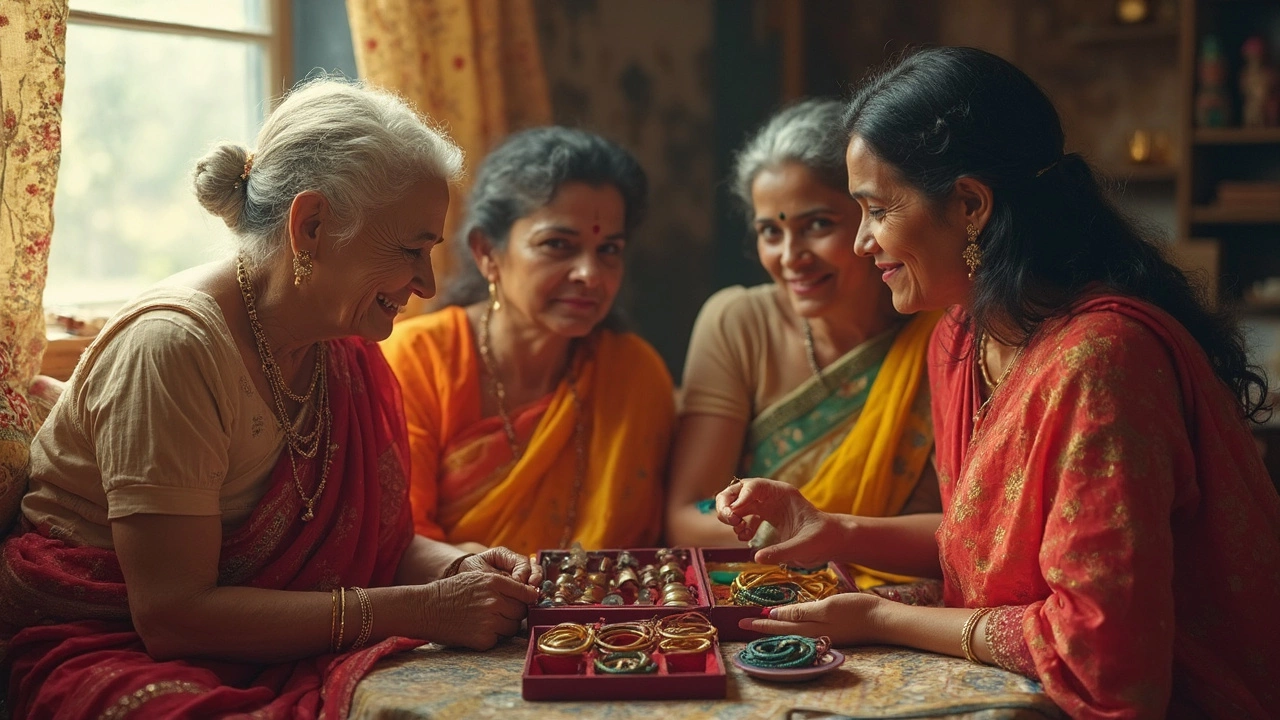
Caring for Your Bangles: Simple Tips
Bangles can last for years if you treat them right, whether they’re glass, metal, or plastic. It’s not hard, but a little know-how goes a long way. Glass bangles, in particular, are super fragile. Even a small tap on a hard surface can crack them. Always slide them off and on with care—never force them past your wrist, or you may end up with broken pieces and a painful scratch.
Metal bangles, like the popular Indian bangles made from gold, silver, or brass, need a different approach. They can tarnish or get dull if you don’t clean them every so often. Skip strong cleaners; just wipe them gently with a soft cloth. For stubborn spots, use a mix of mild soap and warm water, then dry them completely to avoid water marks or rust.
Here are some easy pointers to keep your bangles looking great:
- Store glass bangles in separate soft-lined boxes or pouches to prevent chipping. If possible, keep them vertically, not stacked.
- For metal bangles, use anti-tarnish strips or pouches, and keep them away from perfume, sweat, and water.
- Avoid wearing bangles while doing chores, especially those involving water or chemicals.
- Remove bangles before showering or swimming—even the toughest ones can lose their finish over time.
- When traveling, wrap individual bangles in tissue or bubble wrap. This works wonders for glass, stone, and fancy designer pieces.
If you’re curious about how different types stand up to daily use, check out this quick breakdown:
| Type of Bangle | Best Cleaning Method | Durability |
|---|---|---|
| Glass | Soft cloth, avoid water | Fragile |
| Gold/Silver | Soap & water, dry well | High, but can scratch/tarnish |
| Brass/Copper | Lemon juice & salt for tarnish | Moderate, can corrode |
| Plastic/Resin | Soap & water | Very durable |
The most common reason bangles break or lose their shine is rough handling or poor storage. Take a minute to put them away carefully, and they’ll stay as bright as the day you got them.

